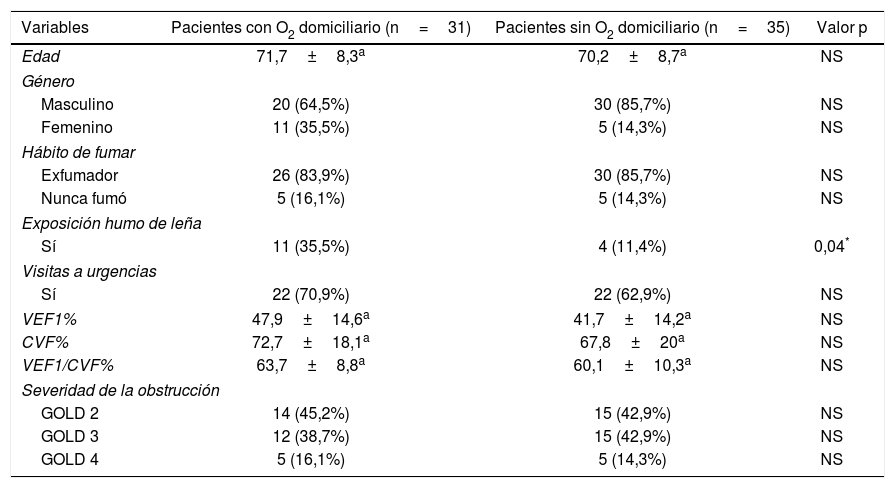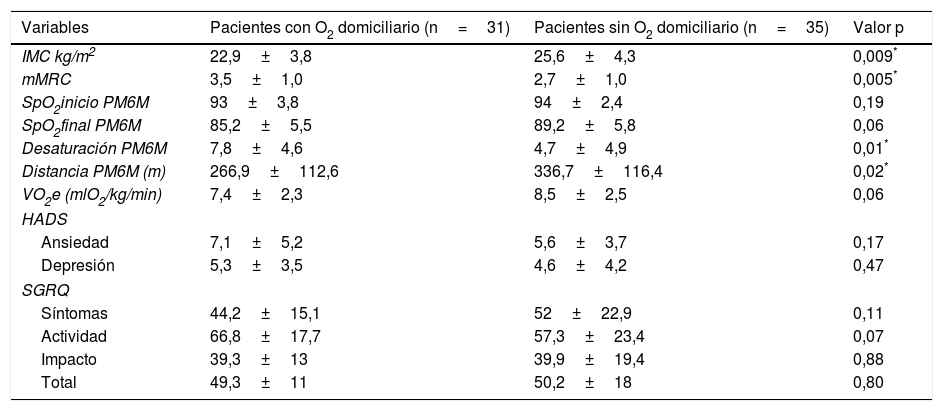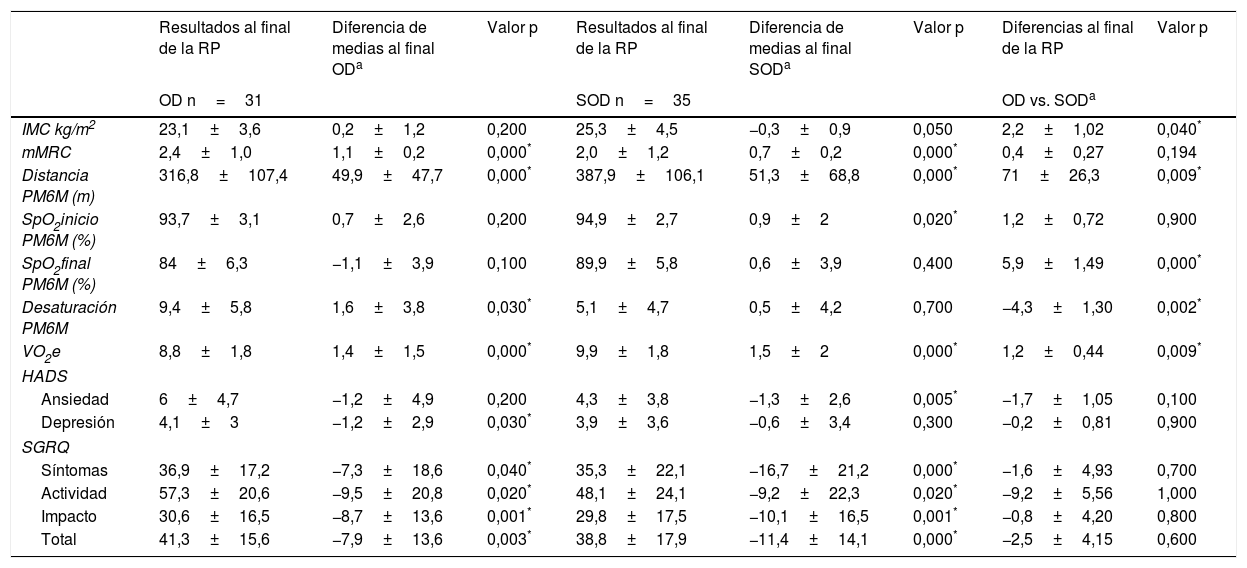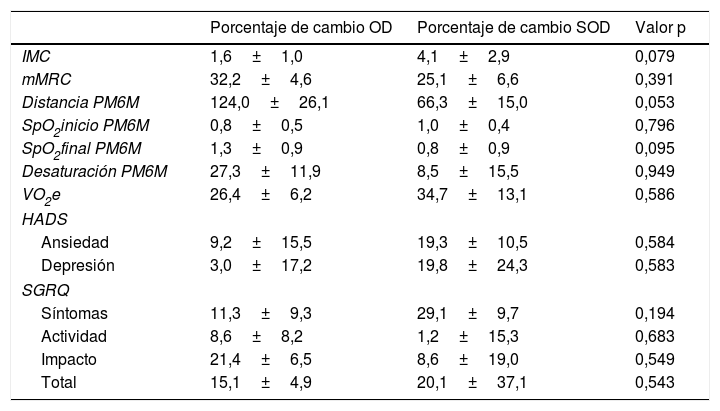La rehabilitación pulmonar en pacientes con EPOC genera impacto en la tolerancia al ejercicio, la calidad de vida relacionada con la salud (CVRS) y la disminución de síntomas; sin embargo, se desconoce si existe un comportamiento diferencial en los pacientes que tienen indicado oxígeno domiciliario. El propósito de este estudio fue comparar los efectos de un programa de rehabilitación pulmonar en términos de tolerancia al ejercicio, disnea y CVRS en dos grupos de pacientes con EPOC: uno con indicación de oxígeno domiciliario y otro sin indicación.
MétodosEstudio descriptivo prospectivo que incluyó 66 pacientes, 31 con oxígeno domiciliario y 35 sin prescripción de oxígeno. Se valoró al inicio y final del programa el índice de masa corporal, la disnea con la escala modificada Medical Research Council (mMRC), la distancia recorrida en la prueba de marcha de 6 minutos (PM6M), la ansiedad y depresión con el Hospital Anxiety and Depression Scale (HADS) y la CVRS medida con el cuestionario St. George Respiratory Questionnaire (SGRQ).
ResultadosLas puntuaciones del HADS y del SGRQ presentaron mejoría en todos los dominios, pero no hubo diferencias entre ambos grupos; sin embargo, el índice de masa corporal, la mMRC, la distancia recorrida en la PM6M y el VO2e mantuvieron su diferencia estadísticamente significativa a favor del grupo sin oxígeno domiciliario (p<0,05).
ConclusionesLos pacientes sin prescripción de oxígeno presentaron mejor rendimiento en la PM6M, lo cual puede atribuirse al menor grado de disnea en las actividades de la vida diaria y a la mayor limitación en pacientes con oxígeno domiciliario.
Pulmonary Rehabilitation in patients with COPD impacts exercise tolerance, health-related quality of life (HRQoL) and symptom reduction: However, it is not known whether there is differential behaviour in patients for whom home oxygen is indicated. The purpose of this study was to compare the effects of a pulmonary rehabilitation programme in terms of exercise tolerance, dyspnoea and HRQoL in two groups of patients with COPD: one with indication for home oxygen and the other without.
MethodsProspective descriptive study that included 66 patients, 31 with home oxygen and 35 with no oxygen prescription. Body mass index, dyspnoea evaluated with the modified Medical Research Council scale (mMRC), 6-min walk distance (6MWD), anxiety and depression according to the Hospital Anxiety and Depression Scale (HADS) and HRQoL measured with the St. George Respiratory Questionnaire (SGRQ) were assessed at the beginning and end of the programme.
ResultsThe HADS and SGRQ showed improvement in all the domains but there were no differences between either group. However, the body mass index, the mMRC, the 6MWD and the VO2e maintained their statistically significant difference in favour of the group without home oxygen (P<.05).
ConclusionsThe patients without oxygen prescription performed better in the 6MWD, which can be attributed to the lower degree of dyspnoea in the activities of daily life and to greater limitation for patients with home oxygen.
Artículo
Si ya tiene sus datos de acceso, clique aquí.
Si olvidó su clave de acceso puede recuperarla clicando aquí y seleccionando la opción "He olvidado mi contraseña".Comprando el artículo el PDF del mismo podrá ser descargado
Precio 19,34 €
Comprar ahora












